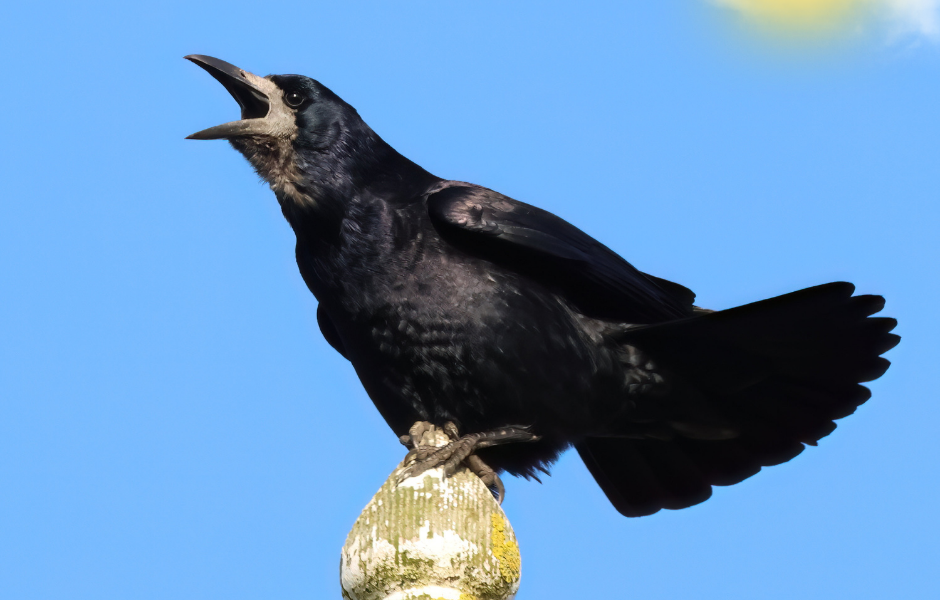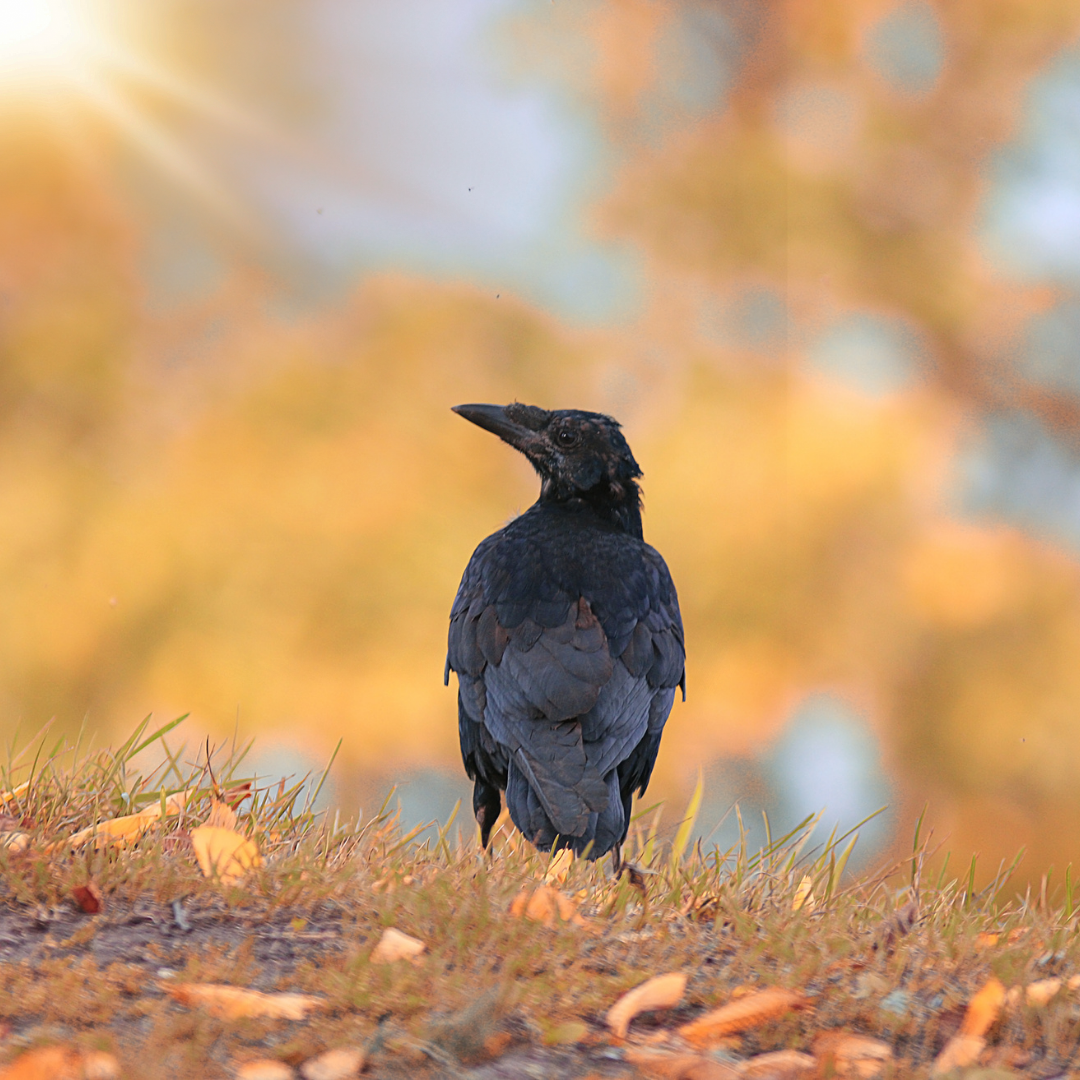
This children’s article, Can birds really understand humans?, has been written for native English speakers and learners of English as a second or foreign language. It can help children build vocabulary, learn about amazing animal intelligence, and discover how humans study the natural world. Written by Mark Pulley, a teacher and writer who creates fun and informative news articles for English learners.
Meet Leo the rook
Scientists at the University of Cambridge have discovered that a rook – a large black bird from the crow family – can follow human voice commands, just like a dog!
The clever bird, called Leo, was able to learn three commands: “speak,” “come here,” and “wait.” When told to “speak,” Leo gave a loud caw on request.
How scientists tested the rook
At first, Leo was tested with a juicy worm as a reward. Later, the researchers made it harder by wearing sunglasses to hide their eyes and also using recorded voice commands. This proved that Leo wasn’t just guessing from hand movements or lip reading; he could really understand sounds alone.
Two more rooks, named Connelly and Fry, also learned some commands, but they haven’t reached Leo’s level because they had less time to practise. So watch this space, they could be even smarter than Leo!
What this teaches us about animals
Many people think only pets like dogs or cats can follow our voices. But this study shows that even wild animals, like Leo the rook, can learn to respond.
Rooks aren’t the only clever creatures out there. Chimpanzees have been seen using sticks and stones as tools to help them find food. Octopuses can escape from mazes and even unscrew jars to grab tasty snacks. Dolphins are one of the very few species that love to play. They’ve been spotted tossing seaweed to each other like a game of underwater catch.
These examples show us that animals are often much smarter than we expect, and that we should respect them and their habitats as much as possible.

Article vocabulary list
- Rook – a large black bird, related to crows and ravens
- Command – an instruction given to tell someone (or something) what to do
- Reward – something given for doing a good job, like food or a treat
- Recorded – captured as sound or video so it can be played again later
- Domesticated – animals tamed by humans to live as pets or farm animals
- Corvid – a family of birds including rooks, crows, and ravens
- Practise – to repeat something often to get better at it
- Intelligent – very smart, able to solve problems or learn quickly
Comprehension questions
Just click the plus (+) to see the answer
1. What kind of bird is Leo?
A) A raven
B) A rook
C) A parrot
Answer: B) A rook
2. What command made Leo caw?
A) “Come here”
B) “Wait”
C) “Speak”
Answer: C) “Speak”
3. Why did scientists wear sunglasses during the tests?
A) To look cool
B) To hide their eye movements
C) To block the sun
Answer: B) To hide their eye movements
4. Which family of birds are rooks part of?
A) Parrots
B) Corvids
C) Seagulls
Answer: B) Corvids
5. Which animal has been seen playing catch with seaweed?
A) Octopuses
B) Dolphins
C) Chimps
Answer: B) Dolphins

Mark is a writer and EFL teacher from England with eight years’ experience. He’s passionate about travel, sport (especially football), animals, nature, and history, and enjoys helping children explore the world through language and learning.




